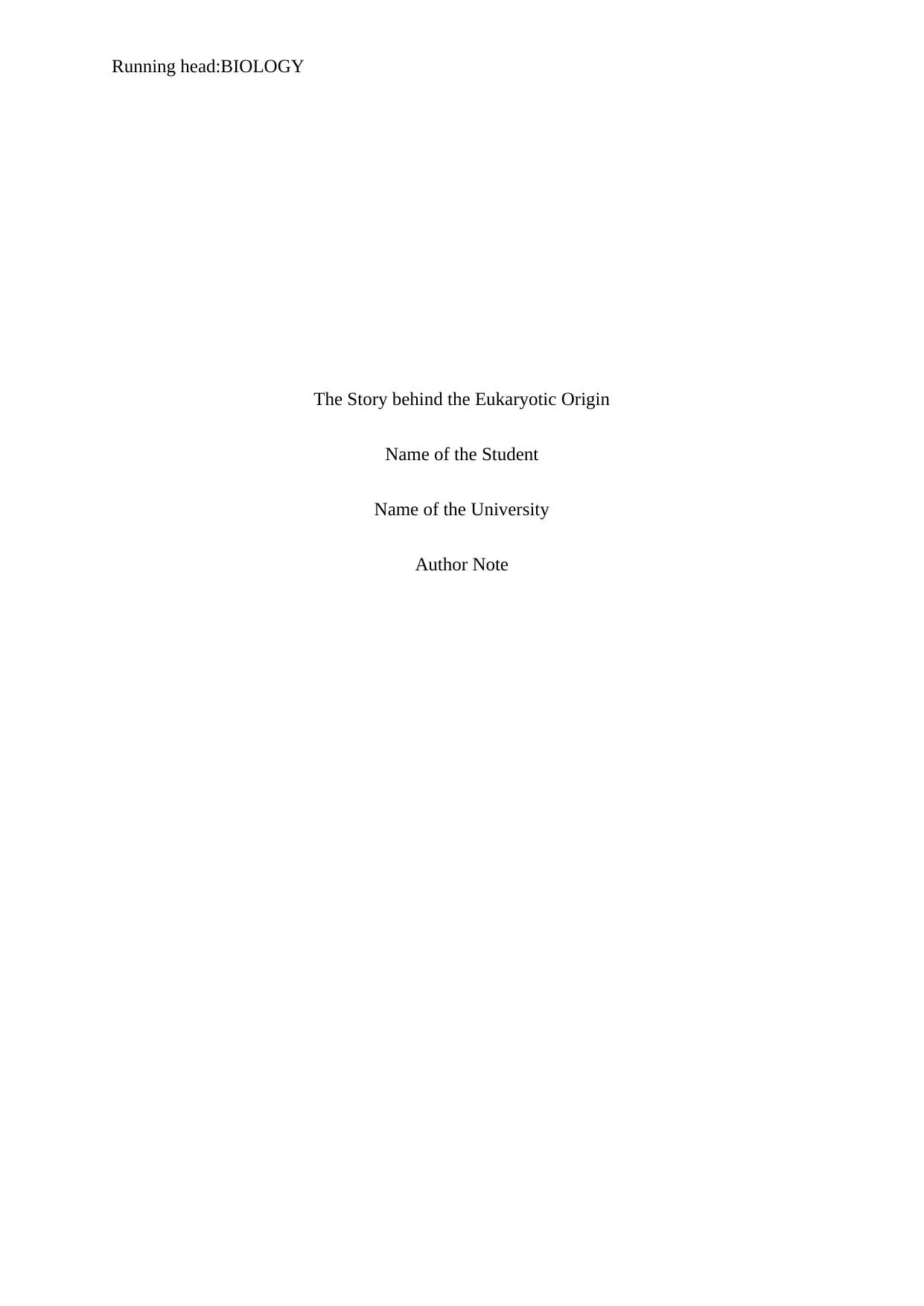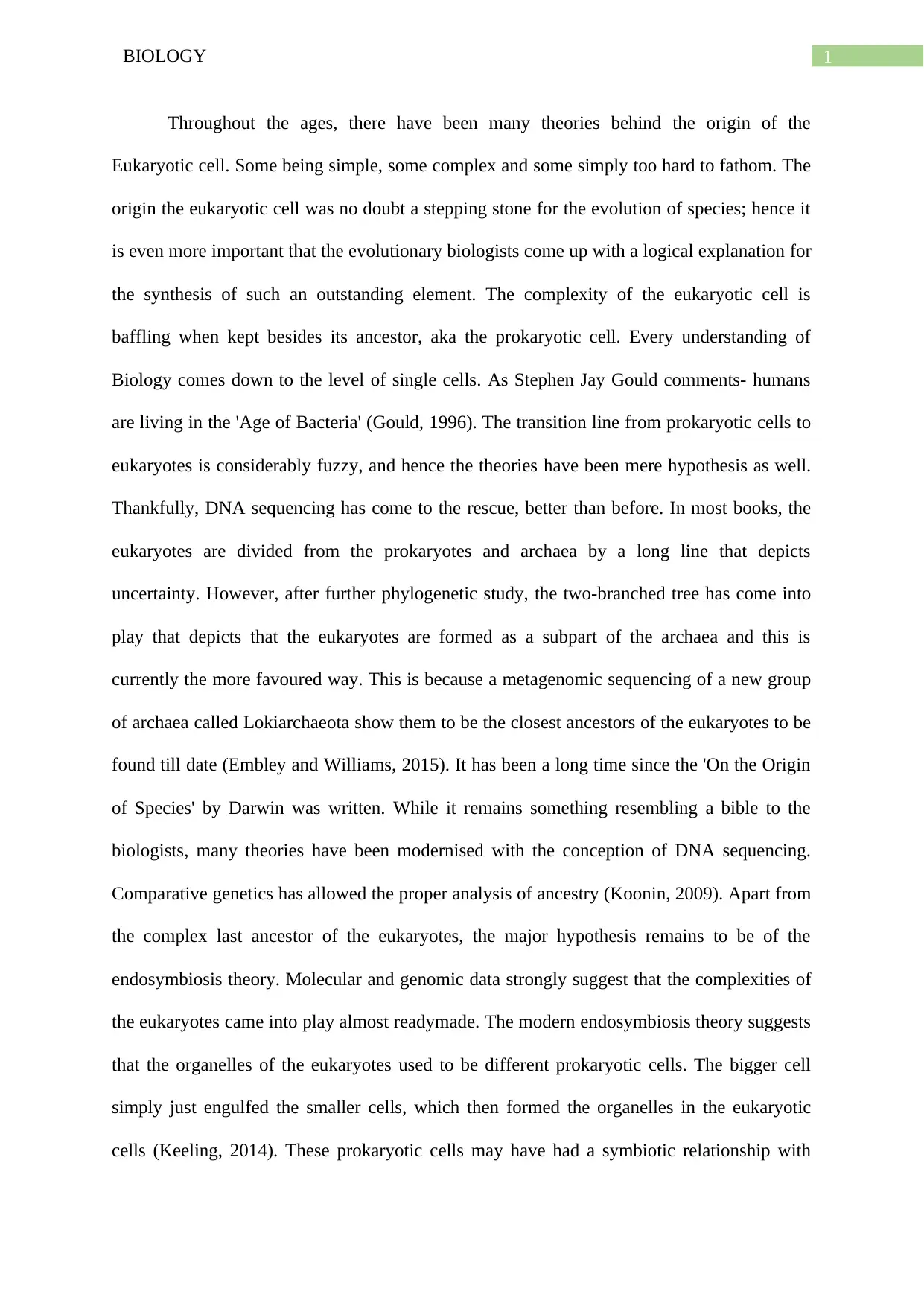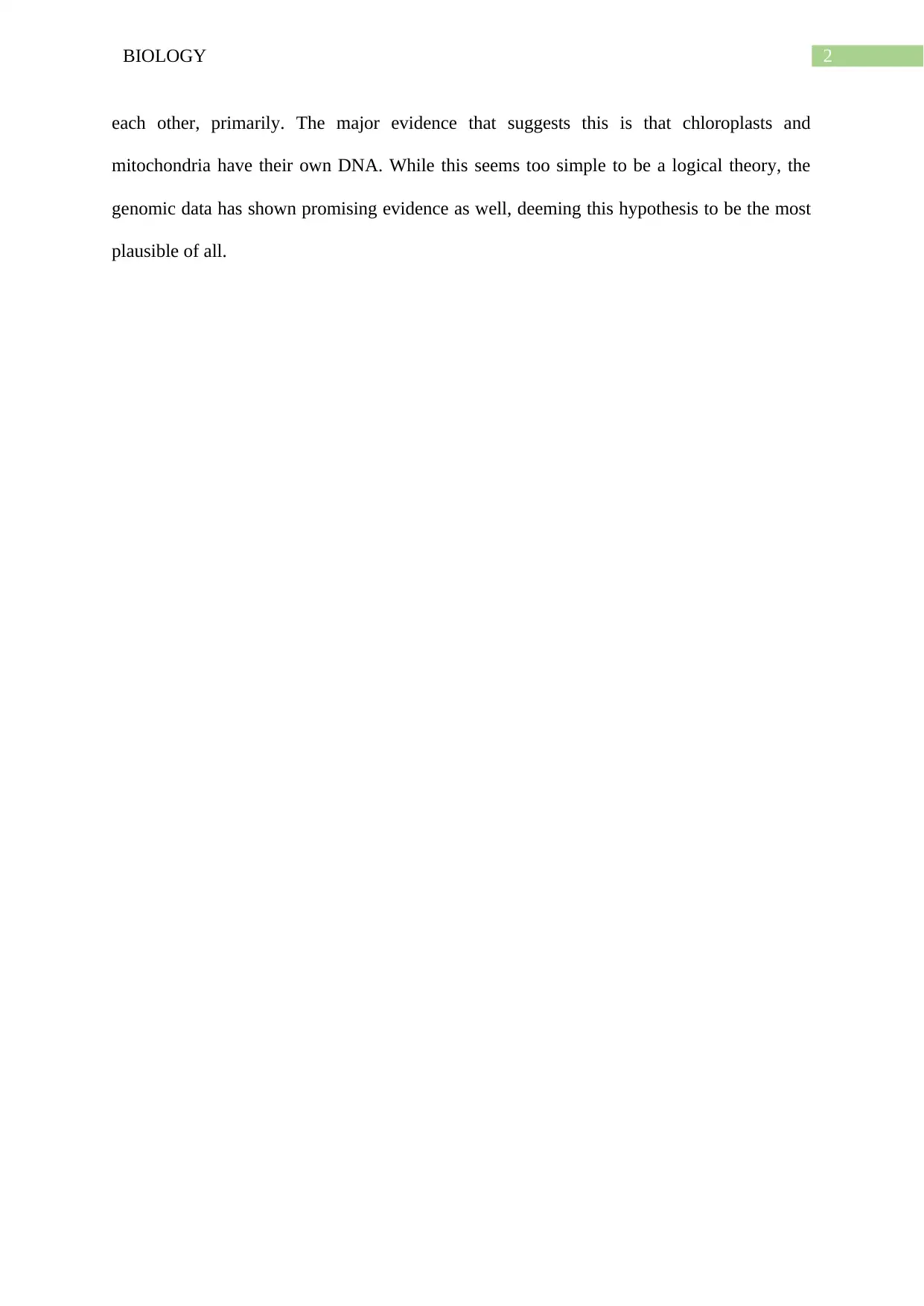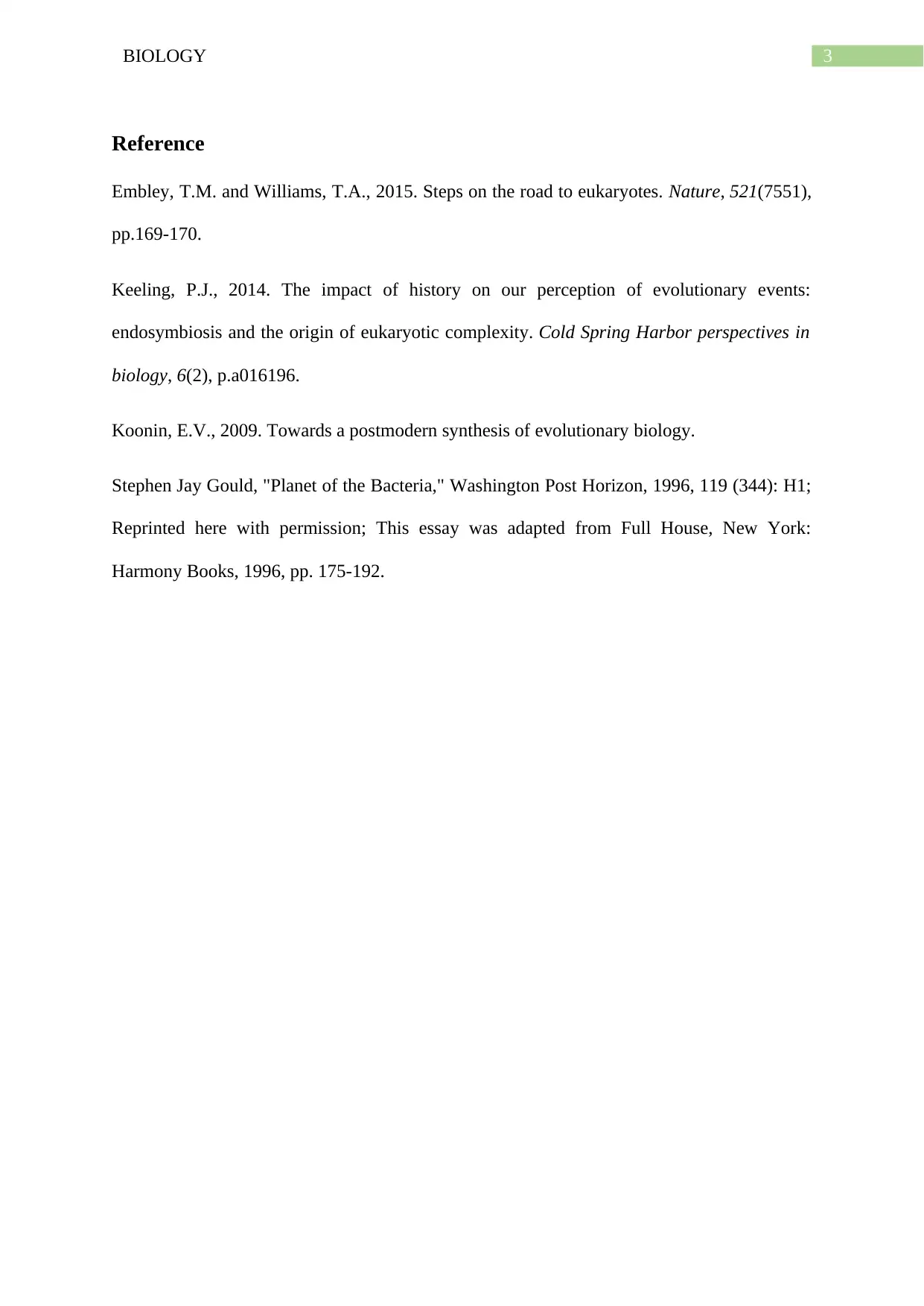A Detailed Report on the Origins of the Eukaryotic Cell
VerifiedAdded on 2022/09/18
|4
|612
|23
Report
AI Summary
This report delves into the fascinating topic of eukaryotic cell origins, exploring the evolutionary journey from prokaryotic cells to the complex structures we see today. It discusses the significance of DNA sequencing and the impact of archaea in understanding these origins. The report highlights the endosymbiosis theory as a key explanation, supported by genomic data, which suggests that organelles like mitochondria and chloroplasts were once independent prokaryotic cells. The report references key publications in the field and provides a concise overview of the current understanding of eukaryotic cell development, emphasizing the role of comparative genetics and the ongoing research that continues to shape our understanding of this fundamental biological process.
1 out of 4





![[object Object]](/_next/static/media/star-bottom.7253800d.svg)